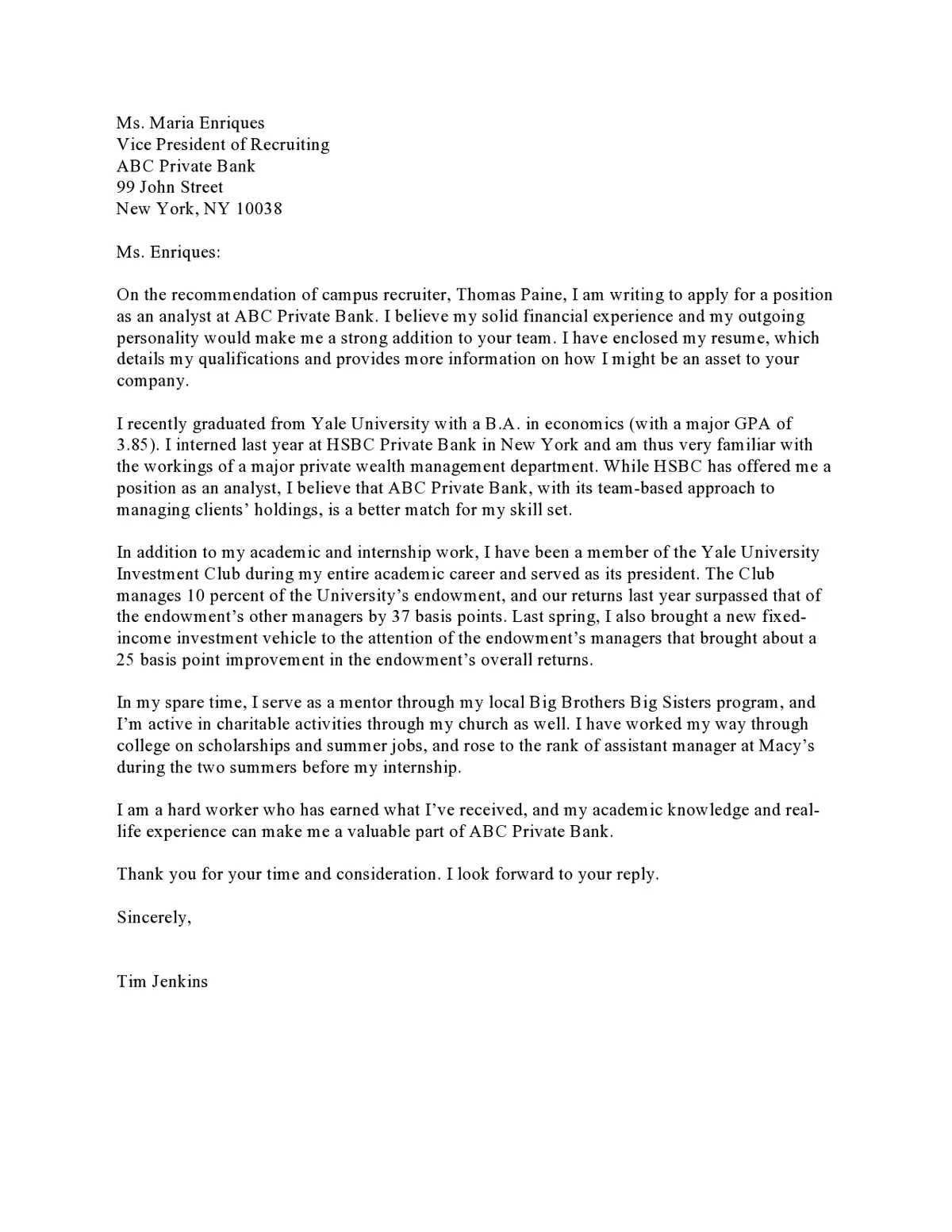Understanding the Purpose of a Cover Letter
A cover letter is more than just a formality; it’s your initial handshake with a potential employer. It serves as a crucial introduction, providing context to your resume and allowing you to elaborate on your qualifications. Think of it as your personal sales pitch, where you highlight your key skills, experiences, and why you’re the perfect fit for the role. A well-crafted cover letter significantly increases your chances of getting noticed, as it goes beyond a simple list of your past experiences. It allows you to demonstrate your personality, communication skills, and genuine interest in the company and position. This document offers an opportunity to showcase your writing abilities and express enthusiasm, ultimately helping you stand out from a crowd of applicants who might have similar qualifications. By understanding its purpose, you can use it to create a strong first impression.
Why Is a Cover Letter Important?
In today’s competitive job market, a cover letter is a vital tool to set yourself apart. It enables you to offer a glimpse of your personality and enthusiasm that a resume alone can’t convey. This document enables you to explain gaps in your employment history, address potential concerns, and demonstrate how your skills align with the job’s specific requirements. The cover letter showcases your communication skills and attention to detail, which are highly valued by employers. It also gives you a chance to express your interest in the company and the position, indicating that you’ve done your homework and are genuinely interested. Moreover, it allows you to tailor your application to each specific job, demonstrating that you’re not just sending out a generic resume, but that you are truly motivated and dedicated to applying for this role.
How a Cover Letter Complements Your Resume
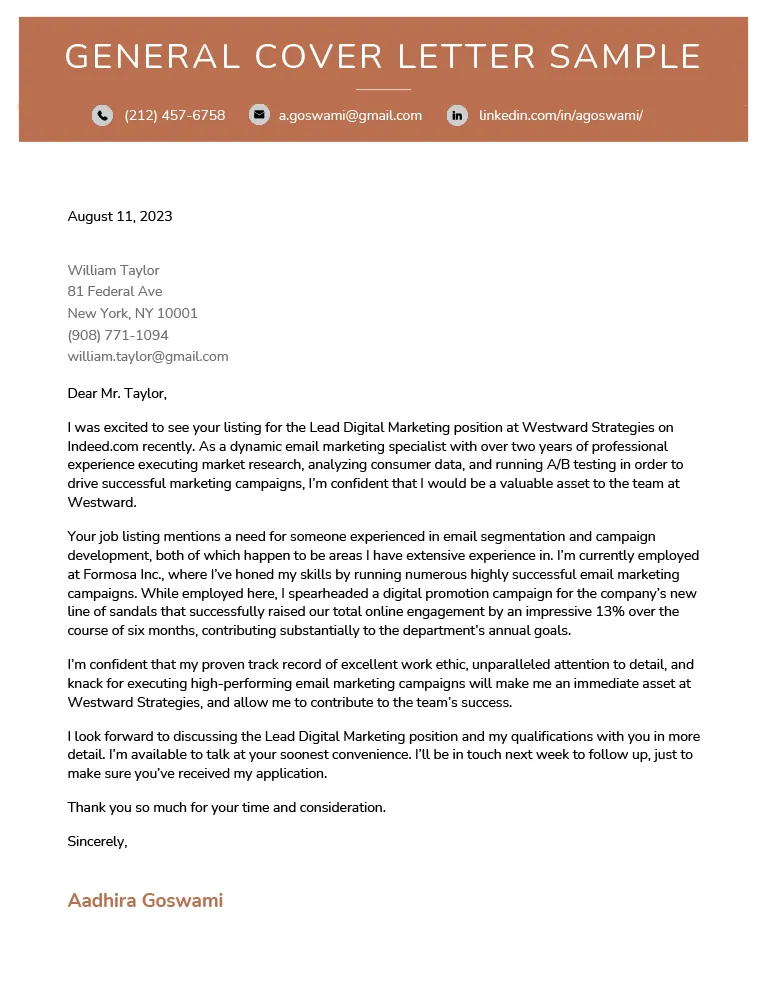
While your resume provides a snapshot of your professional history, a cover letter serves as a narrative, expanding on the information and providing context. It allows you to delve deeper into your achievements and explain how they’re relevant to the role. The resume gives the ‘what’ and the cover letter explains the ‘why.’ The cover letter allows you to articulate the value you bring to the organization by explicitly connecting your skills to the job requirements and demonstrating your understanding of the company’s needs. By using a cover letter, you can strategically highlight the experiences and skills most pertinent to the position and offer a more comprehensive view of your qualifications. This allows you to provide a richer, more complete picture of your professional self and make a stronger case for your candidacy, showcasing why you are the best fit for the role.
Key Components of a Powerful Cover Letter
A compelling cover letter typically includes a strong introduction, a body that highlights your skills and experiences, and a concise conclusion. Begin with a personalized greeting, addressing the hiring manager by name if possible. The body should showcase your qualifications and achievements, emphasizing how they align with the job description. Quantify your accomplishments whenever possible using numbers and data to provide concrete evidence of your skills. Close your letter with a call to action, expressing your enthusiasm for the position and your willingness to follow up. Proofread the entire letter meticulously to eliminate any grammatical errors or typos. A well-structured and carefully crafted cover letter will effectively highlight your strengths and demonstrate your suitability for the role, increasing your chances of securing an interview.
Crafting a Compelling Introduction
Your introduction sets the tone for the entire letter, so make it count. Start with a hook that grabs the reader’s attention, immediately expressing your interest in the position and the company. Mention the specific role you are applying for and how you found the opportunity. Briefly state your key qualifications and why you are a suitable candidate for the job. Consider tailoring your introduction to match the company’s culture or the job’s specific requirements. Avoid generic opening phrases and show that you have researched the company and understand their needs. By crafting a compelling introduction, you create a positive first impression and encourage the reader to continue reading, setting the stage for a successful application. A strong introduction ensures the hiring manager understands your purpose immediately and wants to learn more about you.
Highlighting Your Skills and Experience
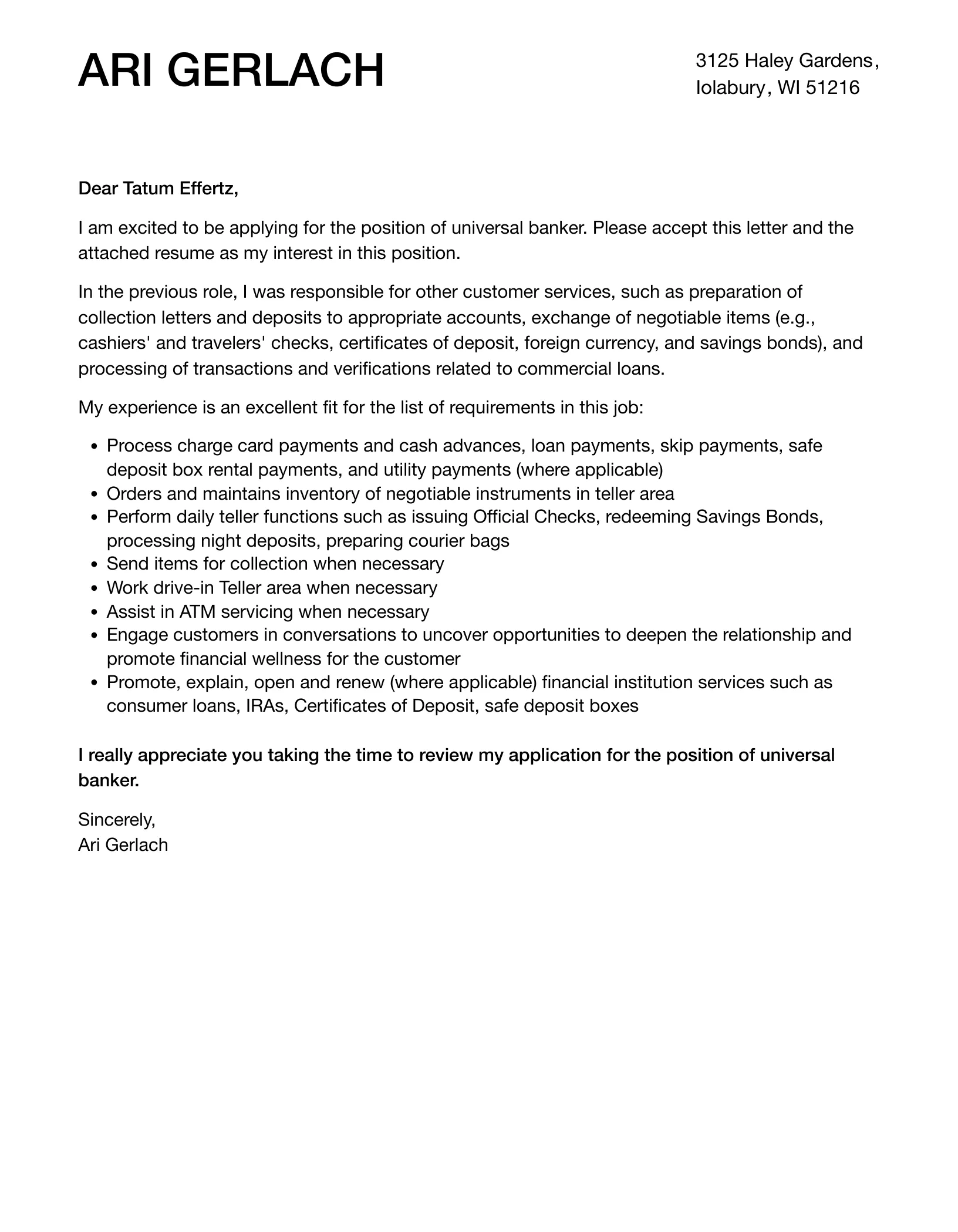
In the body of your cover letter, you should clearly connect your skills and experiences to the job’s requirements. Review the job description carefully and identify the key skills and qualifications that the employer is seeking. Provide specific examples that demonstrate how you have utilized these skills in past roles or projects. Use action verbs to describe your accomplishments and the impact you made in previous positions. Emphasize any relevant achievements and quantify them with data wherever possible. Tailor each example to fit the job, showing how your previous experiences have prepared you to excel in the role. By highlighting your skills and experience effectively, you demonstrate your value and show the hiring manager how you can contribute to the company’s success. Focus on the most relevant experiences and skills, ensuring a strong fit with the job description.
Quantifying Your Achievements
Whenever possible, quantify your achievements with numbers, data, and metrics. Instead of simply stating that you improved sales, specify the percentage increase or the dollar amount. When describing your responsibilities, be specific about your actions and the outcomes. Providing quantifiable results strengthens your claims and makes them more credible. For instance, instead of saying you managed a team, mention the size of the team and your success in achieving its goals. Did you reduce costs, increase efficiency, or improve customer satisfaction? Quantify these achievements to make them more impactful. By using quantifiable data, you demonstrate your ability to deliver results and provide tangible evidence of your skills. Numbers create a powerful narrative, making your cover letter more compelling and helping you stand out from other candidates who may lack specific data.
Tailoring Your Cover Letter to the Job
A generic cover letter is easily recognizable and can be a major turnoff for hiring managers. To make your application stand out, always tailor your cover letter to each specific job you apply for. Start by carefully reviewing the job description and identifying the key requirements. Customize your letter to highlight the skills and experiences that align with those requirements. Research the company and demonstrate your understanding of their mission, values, and culture. Show how your skills and experiences make you an ideal fit for the specific role and the company. Avoid using a one-size-fits-all approach, and instead, focus on crafting a unique cover letter that speaks directly to the needs of the employer. By tailoring your letter, you demonstrate your genuine interest and attention to detail, increasing your chances of being selected for an interview. This shows you’ve invested time and effort to understand the role and the company.
Researching the Company and Position
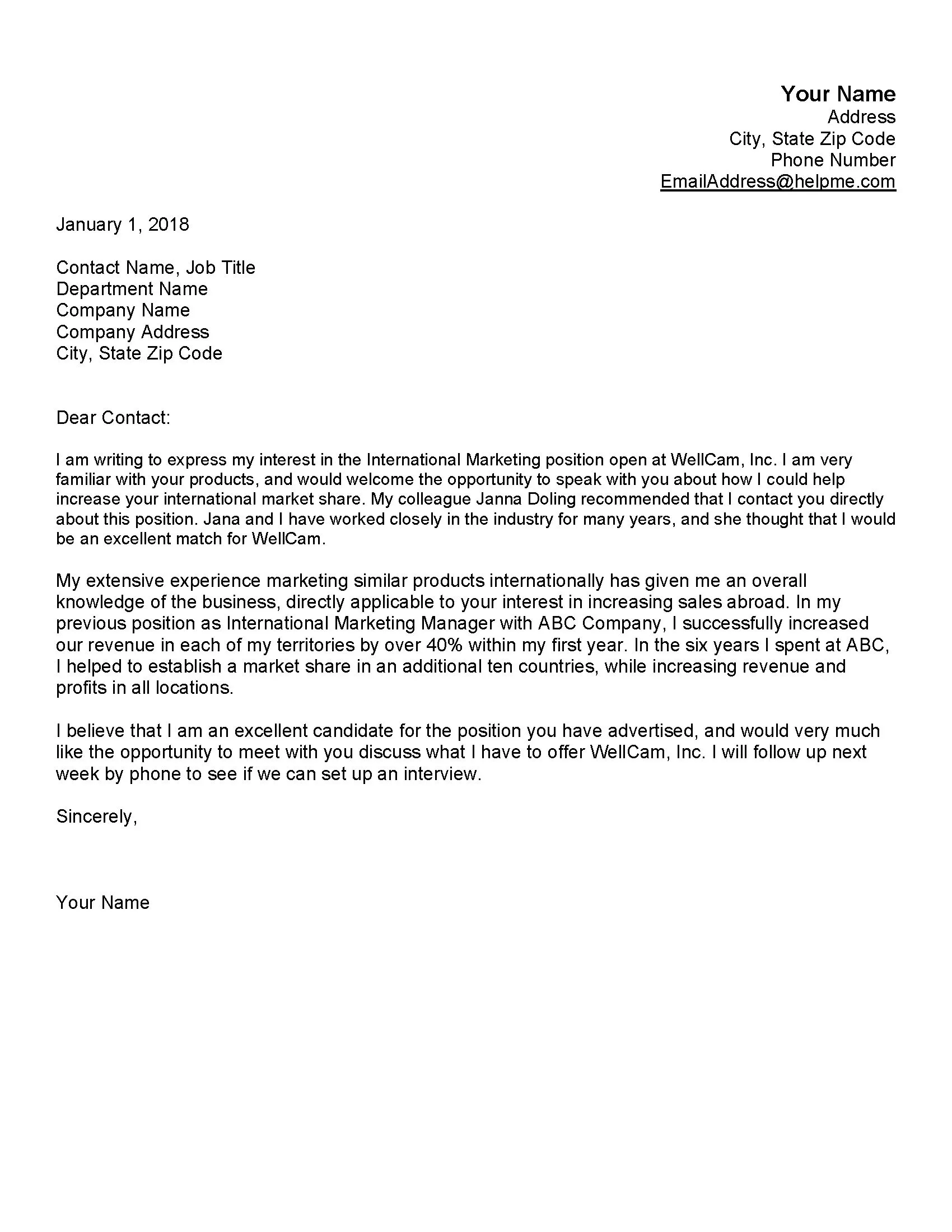
Thoroughly researching the company and the position is critical for creating a compelling cover letter. Visit the company’s website, social media profiles, and any recent news articles to learn about their mission, values, and recent accomplishments. Understand the company’s culture and the industry trends to demonstrate your knowledge and interest. Read the job description carefully, paying attention to the specific requirements and desired qualifications. Research the role to gain a deeper understanding of its responsibilities and the skills needed to succeed. Show how your skills and experiences align with the company’s goals and the role’s requirements. By demonstrating your knowledge of the company and the position, you show that you are genuinely interested and have taken the time to prepare a well-informed application. This level of preparation sets you apart from other applicants.
Customizing Your Letter for Each Application
Avoid the temptation of using a standard cover letter for every job application. Instead, customize your letter to align with the specific requirements of each role and company. Review the job description carefully and identify the key skills and experiences the employer seeks. Adjust your letter to highlight the relevant qualifications and provide specific examples that demonstrate your abilities. Mention the company’s name and tailor the content to reflect its mission and values. Even small changes, such as addressing the hiring manager by name, can make a big difference in the impact of your cover letter. Customizing your letter shows that you are genuinely interested in the role and have invested the time to create a tailored application. This demonstrates attention to detail and your desire to make a strong impression.
Using Strong Action Verbs
Your cover letter should be filled with strong action verbs that bring your accomplishments to life. Action verbs make your experiences more dynamic and demonstrate your ability to take initiative and achieve results. Start your sentences with verbs like ‘managed,’ ’led,’ ‘created,’ ‘developed,’ ‘implemented,’ ‘achieved,’ ‘improved,’ or ‘collaborated.’ Use action verbs to describe your responsibilities and quantify your achievements. For example, instead of saying ‘responsible for managing a team,’ say ‘Managed a team of ten employees, resulting in a 15% increase in productivity.’ By choosing the right action verbs, you highlight your accomplishments and make your cover letter more compelling and persuasive. Action verbs convey the impact of your actions and help the hiring manager understand your contributions.
Formatting and Design Best Practices
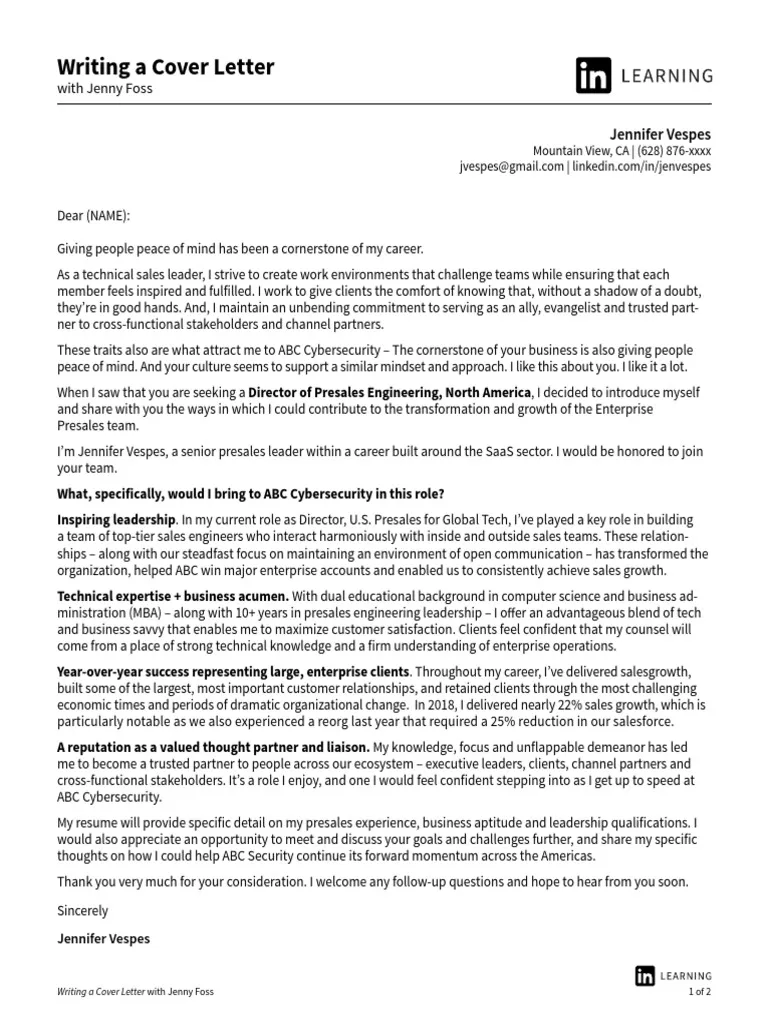
The format and design of your cover letter are important for conveying professionalism and making a positive impression. Keep your cover letter concise and easy to read, typically no more than one page. Use a clear, professional font such as Arial, Calibri, or Times New Roman, with a font size between 10 and 12 points. Use appropriate margins and spacing to ensure the text is well-organized and easy to scan. Use headings and bullet points to break up large blocks of text and highlight key information. Proofread your cover letter carefully to eliminate any formatting errors or inconsistencies. Your cover letter should be visually appealing and easy for the hiring manager to read, reflecting your attention to detail and professionalism. Proper formatting enhances readability and ensures your key points are easily accessible.
Choosing the Right Font and Layout
Choosing the right font and layout for your cover letter is crucial for readability and professionalism. Select a professional font that is easy to read and visually appealing, such as Arial, Calibri, or Times New Roman. Avoid using overly decorative or unusual fonts that may distract from your content. Use a standard font size between 10 and 12 points, ensuring the text is clear and easy to see. Maintain consistent margins and spacing throughout the document to create a clean and organized appearance. Consider using headings and bullet points to break up large blocks of text, making the content more digestible. Your cover letter’s design should be clean, uncluttered, and visually appealing, reflecting your attention to detail and professionalism. The font and layout should make it easy for the hiring manager to quickly scan the document and identify key information.
Ensuring Professionalism and Clarity
Your cover letter is a reflection of your professionalism, so ensure it is written with clarity and precision. Use formal language and avoid slang, contractions, and casual expressions. Write in a concise and straightforward manner, getting straight to the point. Avoid using overly complex sentences or jargon that may confuse the reader. Proofread your cover letter carefully to eliminate any grammatical errors, typos, or punctuation mistakes. Maintain a respectful tone and avoid being overly informal or demanding. Address the hiring manager by name, if possible, and use a professional closing. Your cover letter should showcase your communication skills, attention to detail, and professional demeanor, leaving a positive impression on the hiring manager.
Proofreading and Editing Your Cover Letter
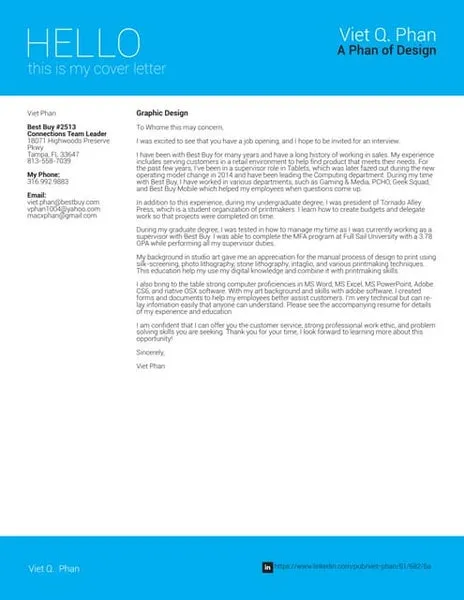
Thorough proofreading and editing are essential steps in creating a powerful cover letter. Before submitting your application, carefully review the document for any grammatical errors, spelling mistakes, typos, or punctuation errors. Read the letter aloud to catch any awkward phrasing or unclear sentences. Ask a friend, colleague, or career counselor to review your cover letter for feedback and suggestions. Ensure the tone and language are professional and appropriate for the job you are applying for. Verify that all the information is accurate and that the formatting is consistent. Proofreading and editing will help you eliminate errors and improve the overall quality of your cover letter, reflecting your attention to detail and professionalism. A polished cover letter shows that you care about presenting yourself in the best possible light.
Common Mistakes to Avoid
Avoid common mistakes that can undermine your cover letter and hurt your chances of getting hired. Do not use generic templates; always tailor your letter to each specific job. Avoid typos, grammatical errors, and unprofessional language. Refrain from rehashing your resume; instead, provide additional context and highlight your achievements. Do not focus solely on what you want; emphasize how you can contribute to the company’s success. Avoid exaggerating your qualifications or providing misleading information. Do not include irrelevant information or personal details. Avoid being overly formal or informal. Finally, don’t forget to proofread and edit your letter meticulously. By avoiding these common mistakes, you can create a powerful cover letter that effectively showcases your skills and increases your chances of securing an interview. A well-crafted cover letter avoids these common pitfalls.
Generic vs Personalized Letters
Generic cover letters are often quickly dismissed by hiring managers. A generic letter feels impersonal and suggests a lack of genuine interest in the specific job or company. These letters often fail to connect with the hiring manager on a personal level and don’t highlight your unique qualifications for the role. Personalized cover letters, on the other hand, demonstrate that you’ve invested time and effort in understanding the company and the position. They showcase your research, attention to detail, and commitment to the job. By tailoring your cover letter to the specific requirements of each role, you increase your chances of making a strong first impression and getting selected for an interview. Personalized letters are more likely to resonate with the hiring manager and convey your enthusiasm for the opportunity.
Ignoring the Job Description
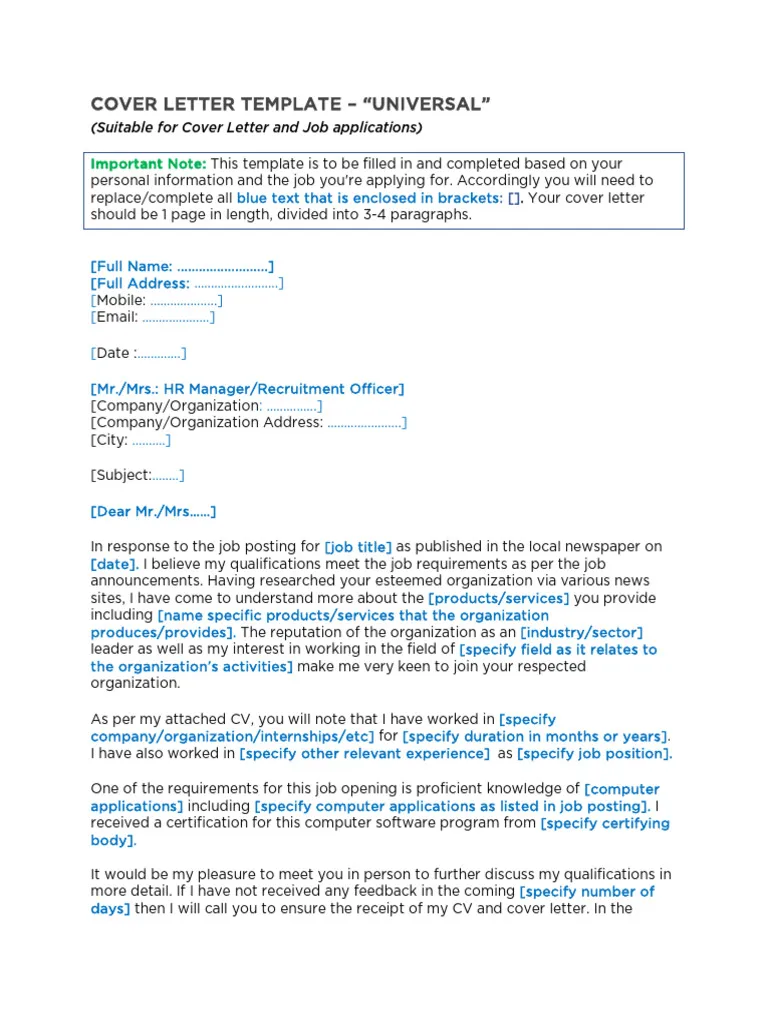
Ignoring the job description is a critical mistake that can significantly reduce your chances of success. The job description is the employer’s blueprint for the ideal candidate. It outlines the necessary skills, experience, and qualifications. When you ignore the job description, you risk missing key requirements and failing to demonstrate how your skills align with the role. Read the description carefully, identifying the keywords and requirements that the employer is looking for. Tailor your cover letter to highlight the experiences and skills that directly match these needs. Show the employer that you understand the role and how you can contribute to their success. By aligning your cover letter with the job description, you increase your chances of making a strong impression and getting noticed. This focus ensures you’re addressing the employer’s specific needs and expectations.
The Importance of a Strong Closing
Your closing is your final opportunity to leave a lasting impression, so make it strong. Reiterate your interest in the position and your enthusiasm for the company. Thank the hiring manager for their time and consideration. Include a clear call to action, such as expressing your willingness to discuss your qualifications further or to schedule an interview. State your availability and preferred method of contact. Proofread your closing carefully to eliminate any errors. The conclusion should be concise, professional, and leave the hiring manager with a positive impression. A strong closing reiterates your value and eagerness to take the next step in the hiring process.
Expressing Enthusiasm and Seeking Follow-Up
Demonstrating enthusiasm is key to making your cover letter compelling. Express your genuine interest in the company and the position, showing that you are passionate about the opportunity. Use enthusiastic language and phrases to convey your excitement. State how you can contribute to the company’s success. Encourage a follow-up by expressing your willingness to discuss your qualifications further and by providing your contact information. Clearly state your availability for an interview and your preferred method of contact. A follow-up demonstrates your commitment to the opportunity and your desire to move forward in the hiring process. By expressing enthusiasm and seeking a follow-up, you increase your chances of making a positive impression and securing an interview. Show your eagerness to learn more.
